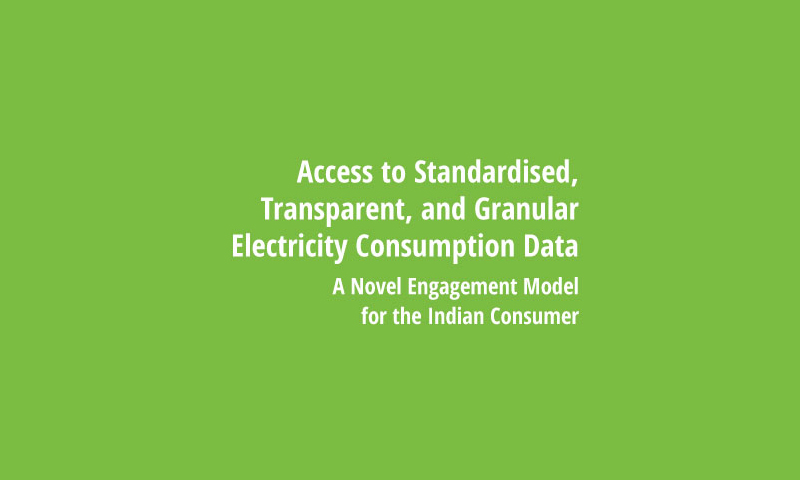Access to Standardised, Transparent, and Granular Electricity Consumption Data: A Novel Engagement Model for the Indian Consumer

Electricity consumers in India receive their energy consumption information through monthly bills with limited data (such as per-unit rate, units consumed). Application of advancement in digitisation of metering data limited to improving the billing and collection efficiency. Post the COVID-19 lockdown, consumers in different parts of India complained about inflated electricity bills. The bills in lockdown were generated based on past data and no opportunity for consumers tomonitor their real-time consumption. This strengthens the need to provide consumers with easy access to transparent and granular electricity consumption data. The growing penetration of technology has evolved consumers into digitally-enabled consumers, and their requirements have changed significantly.One prominent example is telecom consumers who can track their real-time usage (internet data usage, calls, bill dues, economical plans as per usage). However, such flexibility is not available with electricity consumers to track their consumption to manage bills, evaluate the benefit to opt for ToD rate plans, etc. With this backdrop, this paper attempts to answer two key questions: Does the consumer have sufficient, straightforward and standardised electricity consumption data to make informed decisions? What are the potential value propositions for different consumer types? This paper will develop a standardised end-use (In the paper, end-use refers to the data of electricity consumers. Data access refers to consumer access to energy usage data.) data-sharing framework. It will also draw inferences from how end-use energy data is shared with consumers in other countries and with consumers in India’s different sectors. The findings will help develop better energy efficiency interventions such as effective demand response programmes and customer engagement strategies.
